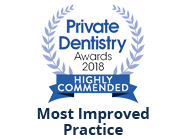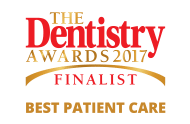
Dr Narinder Dhadwal
BDS (Lond) MJDF RCS (Eng)
MClinDent Perio (Lond)
Diploma in Advanced Clinical
Periodontology (Lond),
MPerio RCS (Edin)
Specialist in Periodontics
GDC 114919
Narinder is a Specialist Periodontist based in private practice. She qualified from St. Bartholomew’s & The Royal London School of Medicine and Dentistry, Queen Mary, University of London in 2007. During her studies she was awarded the Harold Fink Prize for outstanding academic achievement. She then went on to work extensively in general practice and successfully completed her MJDF Diploma from the Royal College of Surgeons of England in 2009.
In 2014 Narinder completed her 3-year postgraduate training in Masters of Clinical Dentistry in Periodontology and Implants at The Royal London Hospital and gained her Membership in Periodontics from the Royal College of Surgeons of Edinburgh in 2015. During her specialist training, Narinder received an award from the British Society of Periodontology (BSP) and presented some of her work at the International Association of Dental Research (IADR) and the British Society of Restorative Dentistry (BSRD). She was also involved in supervising and examining undergraduate students at the Royal London Hospital and was also the Specialist Training Committee (STC) Representative for Periodontology.
In 2018 Narinder became a Fellow of the International Team for Implantology. She is also a visiting lecturer at Eastman CPD and currently a committee member for the Young International Team of Implantology (YITI).
Her clinical interests include the treatment of gum and peri-implant diseases and surgical periodontal treatment in particular periodontal plastic surgery for the treatment of gum recession.
- Non Surgical Periodontics
- Surgical – resective, regenerative periodontics
- Crown Lengthening
- Mucogingival root coverage procedures
- Treatment of Peri-implant disease
What is gum recession?
Gum recession (gingival recession) or receding gums refers to the progressive loss of gum tissue, which can eventually result in tooth root exposure if left untreated.
Gum recession can be difficult to self-diagnose in its earlier stages because the changes often occur asymptomatically and very gradually
Gum recession is a common problem in adults but it may also occur starting from the age of a teenager and treatment depends on the cause of gum recession.
The following symptoms may be indicative of gum recession:
- Sensitive teeth – When the gums recede enough to expose the cementum protecting the tooth root, the dentine tubules beneath will become more susceptible to external stimuli such as hot, cold and sweet.
- Visible roots – This is one of the main characteristics of a more severe case of gum recession.
- Longer-looking teeth and black triangles – Individuals experiencing gum recession often have a “toothy” smile. The length of the teeth is perfectly normal, but the gum tissue has been lost, making the teeth appear longer. Larger spaces between teeth can also result in “black triangles”
- Bad breath, inflammed and bleeding gums – These symptoms are characteristic of gingivitis or periodontal disease. A bacterial infection causes the gums to recede from the teeth and may cause tooth loss if not treated promptly.
What are the main causes of gum recession?
- Overzealous toothbrushing or improper use of an electric toothbrush or even scrubbing with a manual toothbrush can have a serious impact on the appearance of your gums. Excessive force when brushing can start to wear away the gum tissue, and does not guarantee good oral hygiene and plaque removal.
- Periodontal disease or gum disease causes the destruction of the gums, periodontal ligaments, and bone that holds the teeth in place. This can result in recession. However, if you have poor oral hygiene and swollen and inflamed gums, you may not be able to see this until your oral hygiene improves. Once you start brushing sufficiently and effectively, cleaning interdentally, and receive appropriate periodontal treatment, the inflammation, swelling and bleeding will reduce, revealing the true extent of gum recession. This is caused by active (untreated) periodontal disease and not as a result of the treatment. Over time gum recession would become more severe without our appropriate intervention for gum disease. Other causes of periodontal disease include systemic conditions such as uncontrolled diabetes
- Oral piercings are piercings of the tongue, lips or cheek. Individuals with tongue piercings are more likely to develop gum recession in the lower lingual (near, or on the side towards the tongue) region of their anterior teeth than individuals without piercings. Gum recession can increase the risk of sensitivity and of root caries (decay) and can produce a poor aesthetic appearance. Trauma to the buccal (relating to the cheek) gum is observed more frequently in relation to lip piercings. Other complications of piercings include: tooth fracture, abrasion of teeth (excessive wear), speech impediment, infections and allergic response
- Smoking is the biggest cause of periodontal disease and causes the destruction of the gums, periodontal ligaments, and bone that holds the teeth in place and contributes to gum recession in the same way as active periodontal disease as highlighted above. Smokers tend to have a reduced response to non-surgical and surgical intervention and are at higher risk of infections.
- Previous orthodontic treatment may lead to gum recession. The lower central incisors and the upper first molar teeth are the most commonly affected. Movement of teeth outside the jawbone has been reported as a risk factor for gum recession however there are some studies that have found no such association. In some instances, however, having worn braces can lead to gum recession as the teeth are pushed against the thin bone that surrounds them, leading to bone and gum recession
- Abnormal tooth positioning If your teeth are not in alignment to one another, gum recession can occur in this situation due to the roots of the teeth not being well centered within the jaw bone.
What are the main causes of gum recession?
Every case of gum recession is slightly different, and therefore many treatments are available. The nature of the problem, which caused the recession, to begin with must be addressed first. Your periodontist will help you identify the cause and will instruct you in how to address it.
If overly aggressive brushing techniques are eroding the gums, you may have to re-evaluate your brushing habits by using a softer toothbrush or correct brushing technique may be recommended. If poor oral hygiene is a problem, prophylaxis (professional dental cleaning) may be recommended to rid the gum pockets of debris and bacteria. In the case of severe periodontal disease where there is excessive calculus (tartar) build up, scaling and root planing will be performed to heal the gingival inflammation and clean the teeth.
Many patients dislike the aesthetic effects of recession, such as longer looking teeth and the “black triangles” that appear in-between, however depending on the cause of your gum recession, your specialist periodontist or gum specialist may recommend surgical treatment.
A gum graft (also known as a gingival graft or periodontal plastic surgery) is a collective name for surgical periodontal procedures that aim to cover an exposed tooth root surface with grafted oral tissue. The main purpose of gum grafting is to create an adequate zone (width) of attached gum tissue so as to prevent the likelihood of further gum recession and provide gum attachment. It is an excellent way to restore the natural symmetry to the gums and make the smile look more aesthetically pleasing. This procedure will be done by your specialist periodontist and your specialist periodontist can tell you more about this procedure and what to expect following your consultation.
Here are some of the most common types of gum grafting:
- Free Gingival Graft – This procedure is often used to thicken gum tissue. A layer of tissue is removed from the palate and relocated to the area affected by gum recession. Both sites will quickly heal without permanent damage.
- Subepithelial Connective Tissue Graft – This procedure is commonly used to cover exposed roots. Connective tissue is removed fairly painlessly from the outer layer of the palate and relocated to the site of gum recession.
- Acellular Dermal Matrix Allograft – This procedure uses medically processed, donated human tissue as a tissue source for the graft. The advantage of this procedure is that there is no need for a donor site surgery from the patient’s palate (and thus, less pain).
What are the reasons for gum grafting?
Gum grafting is a common periodontal procedure. Though the name might sound frightening, the procedure is commonly performed with excellent results.
Here are some of the major benefits associated with gum grafting:
- Reduced sensitivity – When the tooth root becomes exposed, eating or drinking hot or cold foods can cause extreme sensitivity to the teeth. Gum grafting surgery permanently covers the exposed root, helps reduce discomfort, and restores the good health of the gums.
- Improved appearance – Periodontal disease is characterized by gum recession and inflammation. Gum recession and root exposure can make the teeth look longer than normal and the smile to appear “toothy.” Gum grafting can make the teeth look shorter, more symmetrical and generally more pleasing to look at. In addition, adjacent tissue can be enhanced and augmented during the procedure for aesthetic purposes
- Improved gum health – Periodontal disease can progress and destroy gum tissue very rapidly. If left untreated, a large amount of gum tissue can be lost in a short period of time. Gum grafting can help halt tissue and bone loss, preventing further problems and protecting exposed roots from further decay.
What does gum grafting treatment involve?
Once the need for gum grafting surgery has been determined, there are several treatments your specialist periodontist will want perform before gum grafting can take place. First, the teeth must be thoroughly cleaned supragingival (above the gum margin) and subgingivally (below the gum margin) to remove calculus (tartar) and bacteria. Your specialist periodontist or hygienist may also provide literature, advice and educational tools to increase the effectiveness of homecare and help reduce the susceptibility of periodontal disease in the future.
The gum grafting procedure is usually performed under local anesthetic. The exact procedure will depend much on whether tissue is coming from your palate (roof of the mouth) or a tissue bank (donor).
Initially, small incisions will be made in the area where the graft is required to create a small pocket / pouch to accommodate the graft. Then another incision is made in the roof of your mouth to harvest the connective tissue graft, which is then inserted into the small pocket or pouch.
Stitches are often placed to further stabilize the graft and to prevent any shifting from the designated site. Uniformity and healing of the gums will be achieved in approximately 3-4 months following the surgical procedure.
Treatment options and outcomes depend highly on individual cases, therefore we recommend booking an appointment with your specialist periodontist to discuss this option.
What can I expect after treatment?
While this could be considered a low risk procedure, risks related to connective tissue grafting might include, but are not limited to, post-operative bleeding, pain, swelling, soreness, numbness, infection, facial discolouration, bruising, transient or, on occasion, permanent tooth sensitivity to hot, cold, sweets or acidic foods, failure of the procedure / graft and increased recession of the affected tooth and temporary numbness of the donor site – palate (roof of the mouth).
Below are some pictures following surgical gum grafting procedures using both tissue from the patient’s palate (roof of the mouth) or a tissue bank (donor).

Root coverage using connective tissue harvested from the roof of the mouth (subepithelial connective tissue graft).

Root coverage using donated human tissue acellular dermal matrix allograft (human donor tissue).

Root coverage using donated human tissue acellular dermal matrix allograft (human donor tissue).
Maintenance care?
The foundation of all periodontal therapy is good maintenance. All treatment programmes are followed by long term maintenance regimes with the dentist or hygienist. The maintenance with the hygienist prevents relapse. This can either be carried out at your own practice or here at Aspects Dental and Referral. Detailed annual reassessments by your Specialist Periodontist are required with charts to ensure that disease activity is monitored and kept under control.
Finally…
Periodontic care helps to save many thousands of teeth as well as restoring diseased and unhealthy smiles every day of the year. The care is safe and effective and undertaken by specialists who are fully trained. By being referred to Aspects Dental and Referral means you have the chance of protecting your smile for the future –We look forward to helping you smile again with confidence.















